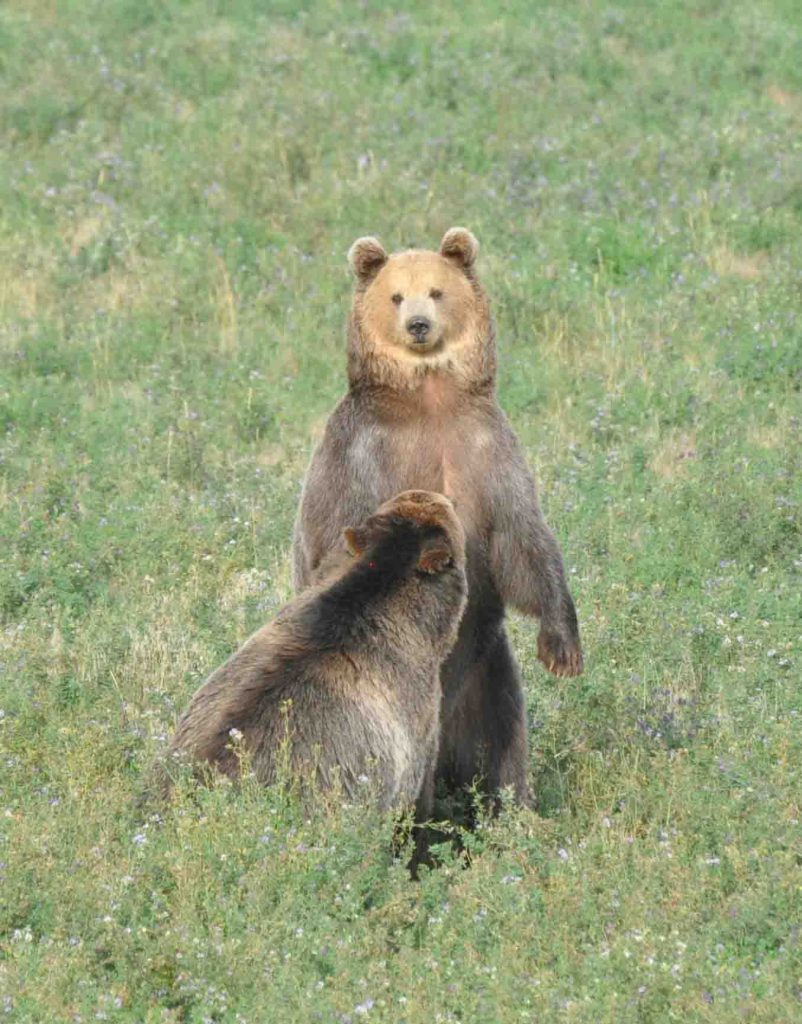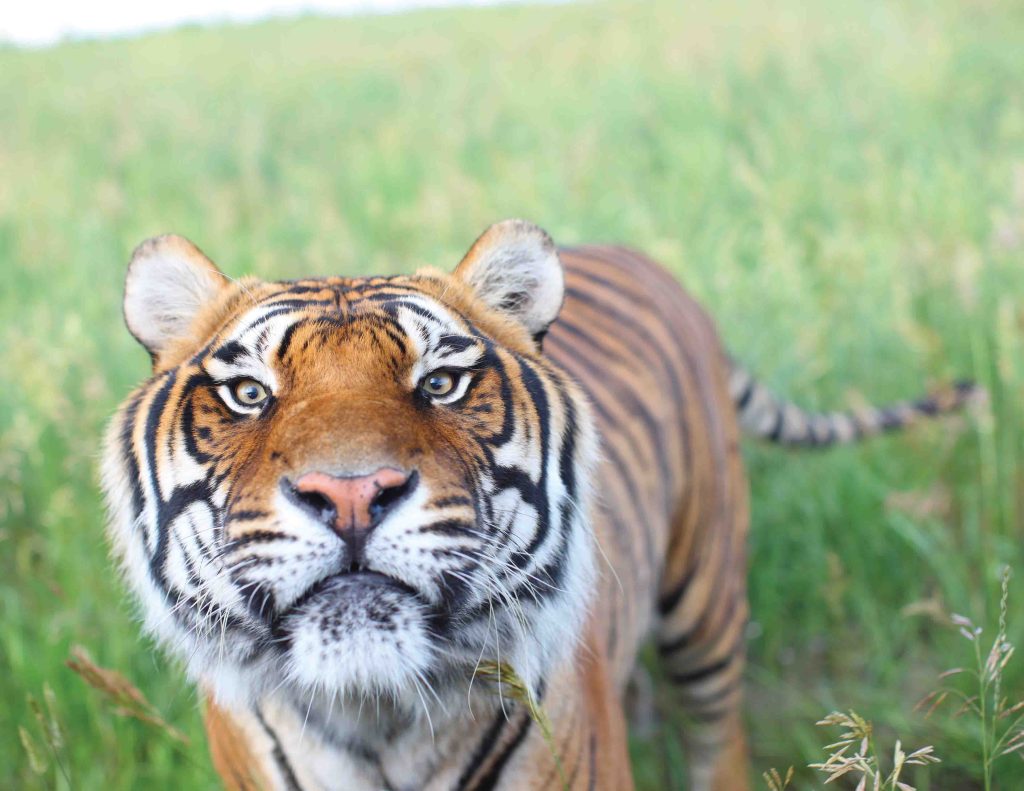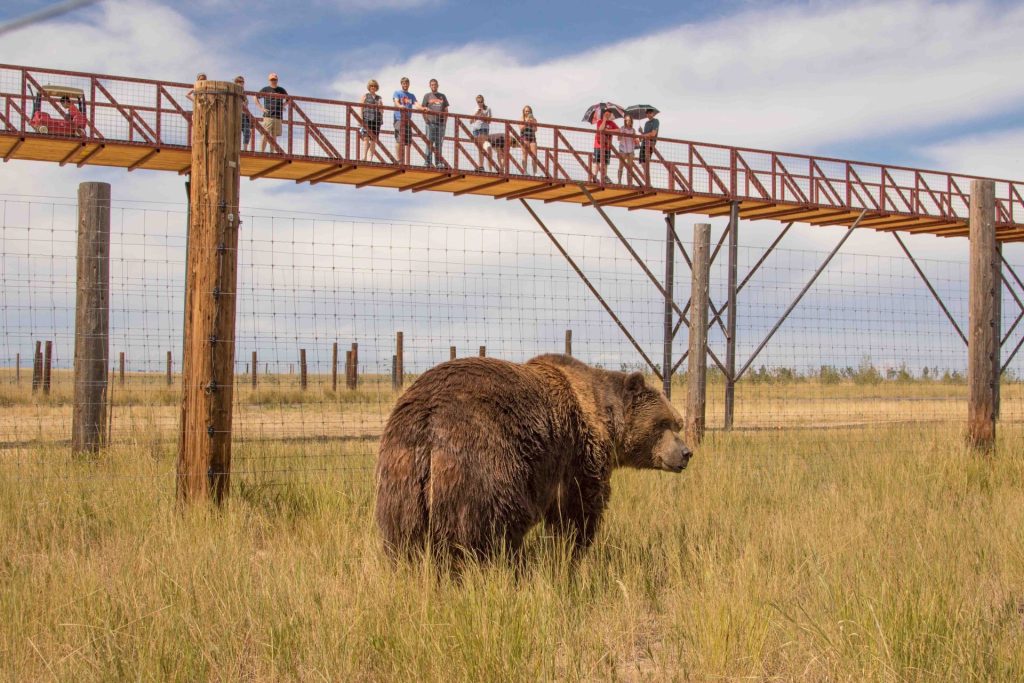Colorado’s WILD ANIMAL SANCTUARY has been saving magnificent carnivores for 45 years
By Heather Shoning
Photos Courtesy of The Wild Animal Sanctuary
A LION LOUNGES lazily under the Colorado sun, belly toward the sky, eyes half-closed, paws outstretched in the grass, not a care in the world.

He is far from the gas station cage or concrete box he once called home. This is not a zoo. It’s not a park. It’s a revolution in animal welfare, and it’s happening just 45 minutes northeast of Denver.
The Wild Animal Sanctuary in Keenesburg is the world’s largest and oldest nonprofit carnivore sanctuary. Founded in 1980 by Pat Craig, it’s a haven for animals once doomed to suffer behind bars or within roadside attractions. With three sprawling facilities—including The Wild Animal Refuge and The Wild Horse Refuge—it now oversees over 40,000 acres dedicated to rescue, rehabilitation and—best of all—dignity.
“Pat was just a teenager when he saw the prob- lem firsthand,” says Austin Hill, the sanctuary’s public relations director. “He visited a zoo, noticed animals hidden away from public view, and when he asked about them, he was told they were surplus—no plans to ever bring them back out.” Haunted, Craig took action.
With a family farm in Boulder and a mission in his heart, Craig approached federal authorities. According to Hill, the response was basically, “Unless you’re going to do it, no one will.” At age 19, Craig rescued his first animal, a jaguar named Freckles, and built what would become a world-renowned operation.
The sanctuary now has three Colorado locations. Keenesburg remains the only one open to the public daily, thanks to its innovative 1.5-mile elevated walkway—known as the Mile Into the Wild—that keeps guests at a respectful distance while offering unprecedented views of tigers, lions, wolves, bears and more. “Animals are deeply territorial,” Hill says. “Pat realized early that when construction workers were up above them, they didn’t react at all. That led to the elevated walkway—where people become birds in the sky. It’s non-invasive, and people often comment on how peaceful it all feels.”
The refuge in southeast Colorado spans nearly 10,000 acres of forested land that also offers endless hills, buttes, bluffs, valleys and grasslands for current and future rescues. The third facility, the Wild Horse Refuge, protects nearly 30,000 acres of land for rescued wild horses.
The sanctuary’s design mirrors its mission: to be the next best thing to the wild. Every habitat is built for freedom, safety and species-specific needs, from African lions to black bears. Feeding happens at varied times and places
to mimic a natural hunting rhythm. And most importantly, all animals are sterilized to avoid perpetuating the cycle of captivity—except male lions, who require testosterone to retain their manes. In this case, the female lions receive a birth control implant.

Some residents are household names thanks to the infamous “Tiger King” saga, but others have quieter tales. There’s Manchas, a jaguar who once lived as a house pet in Mexico. He arrived stressed and losing fur from self-mutilation—but today, his coat is glossy and whole, and he shares a habitat with Bagheera, a black jaguar.
“Or Mary Jane,” Hill says, pausing. “She was kept in a cage by a truck stop, breathing in diesel, having her cubs ripped away from her and sold to motorists.” Inhaling deeply, Hill goes on. “Put it yourself in in her paws. That’s unbelievable—the amount of heartbreak, terror and anger you’d have at the world would be off the charts. But here—she’s found family. I saw her nuzzling and groaning with other tigers in her group. Pure happiness. That image is burned in my brain.”
Asiatic black bears rescued from bile farms in South Korea. “We watched one bear walk and spin, walk and spin,” Hill recalls. “Pat realized she was retracing the size of her old cage—her body remembered before her brain could understand that she was finally free.”
The sanctuary doesn’t just rescue—it educates. Visitors watch an orientation video before entering, while 19 solar-powered kiosks line the walkway with audio stories. Offsite presentations and a vibrant social media presence amplify the message. Volunteers, too—about 130 strong—are trained for either animal care or education shifts, donating at least 16 hours per month.
“Education is vital,” Hill says. “Because once you see it—once you know—you can’t unsee
it. Our goal is for people to understand why animals like these should never be behind glass or in cages again.”
The Wild Animal Sanctuary operates entirely on donations. “We’re a 501(c)3 nonprofit— there’s no federal funding,” Hill explains. “It’s people. People make this possible.” Contributions come from estate gifts, social media fundraisers, lemonade stands—even school bake sales.
And for those without financial means? “Keep the conversation going,” Hill says. “Drop our newsletter at a gym or doctor’s office. Share our posts. Bring your out-of-town guests. It all adds up. Every voice counts.”
But it’s not without challenges. A proposed subdivision next door to the Keenesburg location poses an existential risk. Hill says it’s not about stopping development—it’s about ensuring people know what it means to live next to apex predators. “We’ve seen what happens when public pressure turns,” Hill notes. “Even though we were here first, we’re being cautious.”

Still, the sanctuary is growing. It acquired new acreage in 2023. New rescues continue. Habitat construction never stops. Hill stresses the importance the sanctuary places on being ready for the next rescue before it ever comes to light because once they say “yes,” this is the animal’s forever home.
“Animals are here with us—not for us,” says Hill. “This place is a beacon. And it works because good people make good choices. That’s it. That’s the whole thing.”
With 40,000 acres of open sky and grass under paw, The Wild Animal Sanctuary proves that with enough compassion and commitment, healing isn’t just possible—it’s happening every day. And the world is better for it.
THE WILD ANIMAL SANCTUARY
2999 County Road 53 Keenesburg wildanimalsanctuary.org


